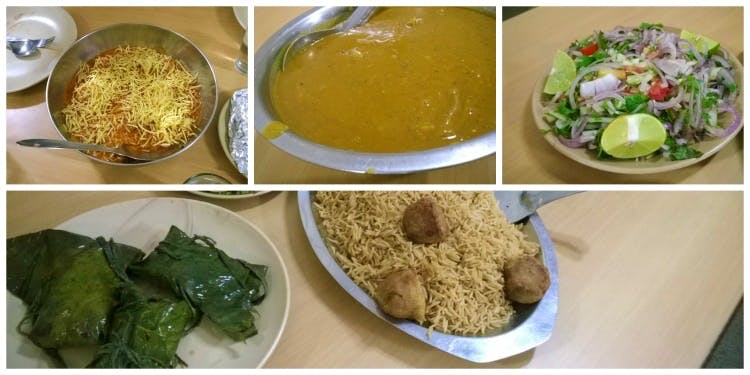“Kitchen’s shut”, exclaimed the middle-aged Parsi owner of a South Bombay Irani cafe. It was almost 11pm on a hot May night. I had been picked up by a friend from my Bandra apartment, and we’d aimlessly driven to South Bombay, not particularly sure where or want we wanted to eat. Somehow, off a meandering flyover, we descended towards a green mosque. My friend immediately zeroed in on this half-famous Parsi café, given that I was from Delhi, and Parsi food was truly on Team Bombay in the grand Delhi versus Bombay debate.
Now almost done with our meal, I replied, “Oh that’s okay. We’re done.”
“Well, then, hurry up. I have to sleep,” he shouted as he turned away and threw one hand up in the air. The entrance shutter had been pulled down and we had been sealed in.
I should have been appalled. I should have gone to their Zomato page and vented. But I didn’t. Instead, I guffawed as we were lead out through the vestibule of his {adjoining} house, and {quite literally}, thrown out on the street.
This, to me, was as Parsi as I could’ve asked for – just like in the movies!
For the uninitiated, a Parsi Irani Cafe is modelled on the all-day coffee houses of Europe. South Bombay businessmen visited Parsi Iranian Cafes to grab quick breakfasts of Cutting Chai and Bun Maska, and artists and writers used to lounge at gingham covered tables under slowly rotating fans, all under the watchful eye of a patriarchal/matriarchal Parsi owner.
To set a clearer understanding of the Parsi phenomenon that has taken Delhi by storm, this article has been written as a two-part exploration. Part one unearths and introduces a tour de force, while part two attempts at stitching together the journey thus far.
I begin with Parsi Anjuman; the dining room at the Parsi Dharamshala in Daryaganj. It is such a well kept secret that even I, having gone to college a stone’s throw away, hadn’t heard of it until last year. Bear in mind that it is an institution meant for the residence of travelling Parsis; one is welcome to dine here but only with a reservation. Mrs. Bagli answers the phone in her saccharine voice enquiring, “What would you like to have, dear?” There is a daily pre-fixed menu of two-three things to choose from. I called on a Tuesday and was offered the option of Mutton Dhansak, Chicken Salli Boti and Patra Ni Machchi. The Bombay hangover took over, and I shamelessly ordered everything. And Kulfi.
As we took our seats, Mrs. Bagli personally supervised the service. Gigantic servings of Mutton Dhansak and Chicken Salli were laid out. I had told her we’d be three people, and three big portions of Patra Ni Machchi were duly served as well.
One can really pick up traces of Parsi food history when it comes to the nomenclature of something like Patra Ni Macchi. As the Zoroastrians of Iran migrated to India, they settled in Saurashtra and established businesses. It is this curious mix of the Irani cooking tradition with Gujarati produce that gave birth to the unique cuisine of the Parsi community.
I began with the Salli Chicken, served with Rotis and a raw mango kachumber, and followed that up with a giant portion of Patra fish and Mutton Dhansak. The most commendable thing about the food at Parsi Anjuman would be, hands down, the play of texture they build in their food. The soft, nubly rice in the Dhansak contrasts beautifully against the crunchy croquettes, which in turn are in stark contrast to the velvety meat and lentil gravy. In the Salli Chicken, the tender meat in a luscious tomato gravy works wonders with the crunchy Salli. The Patra fish, too, unwraps from its banana leaf and falls off with the slightest nudge of the fork – the mint and coconut dressing perfect and refreshing.

